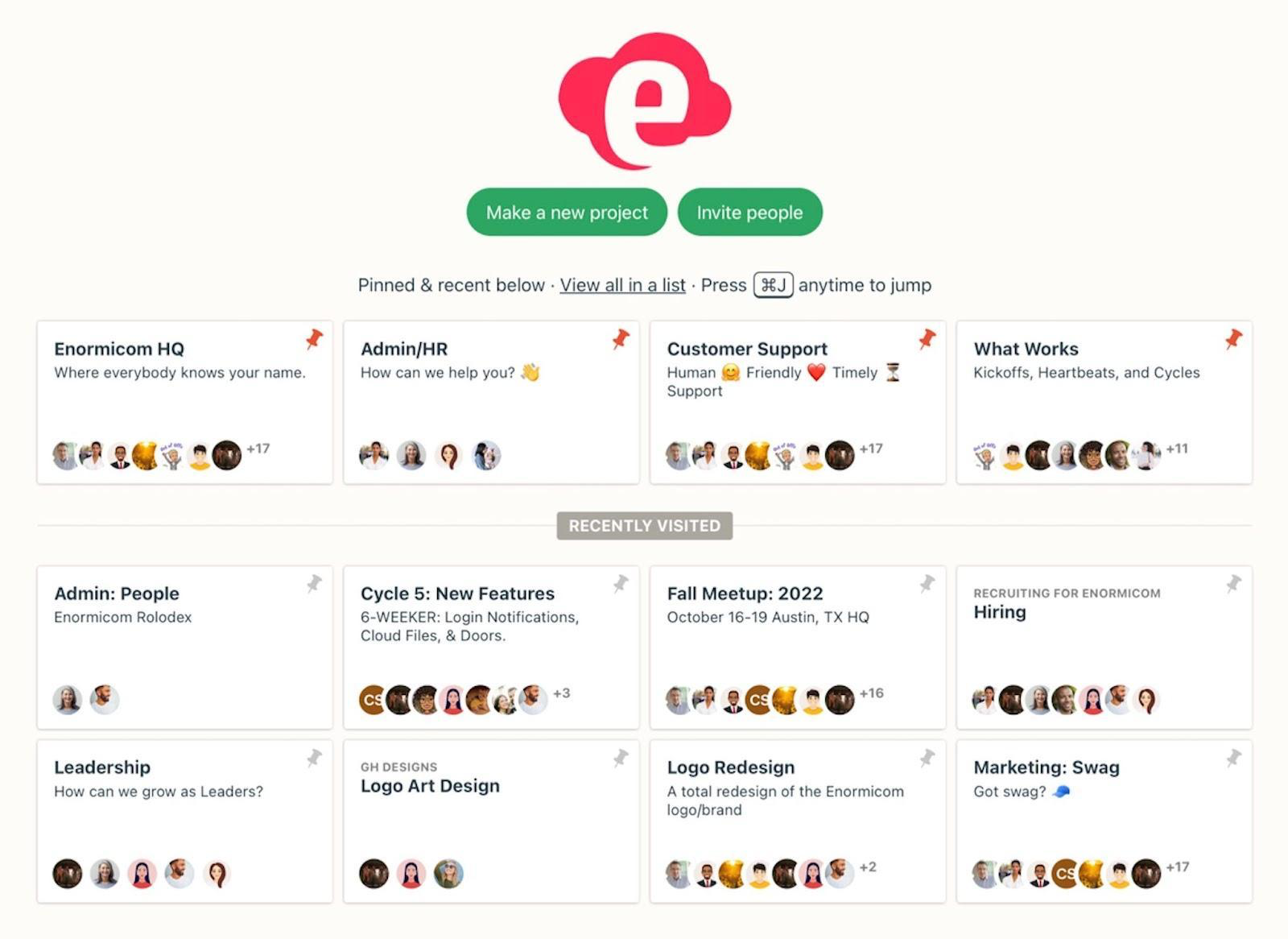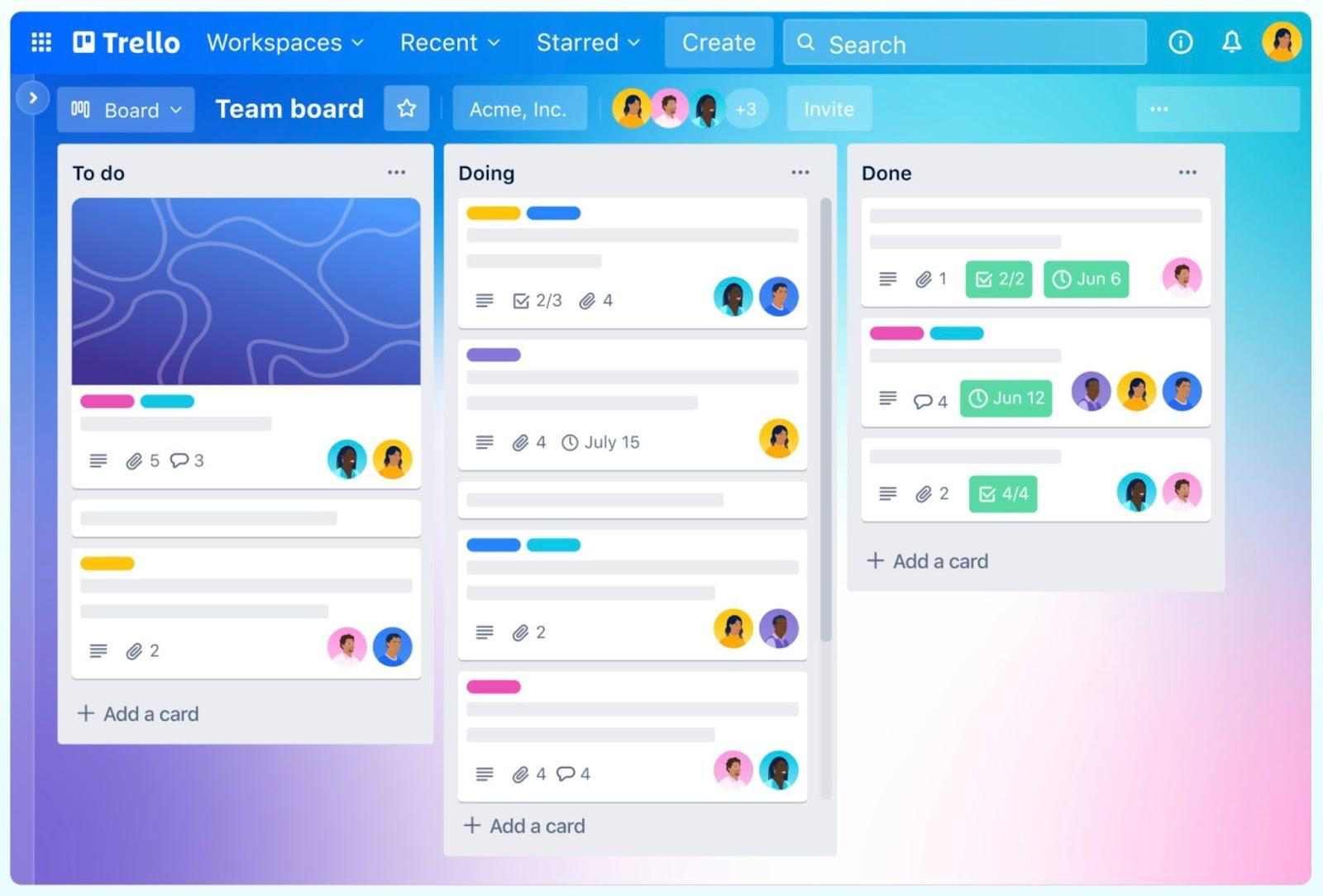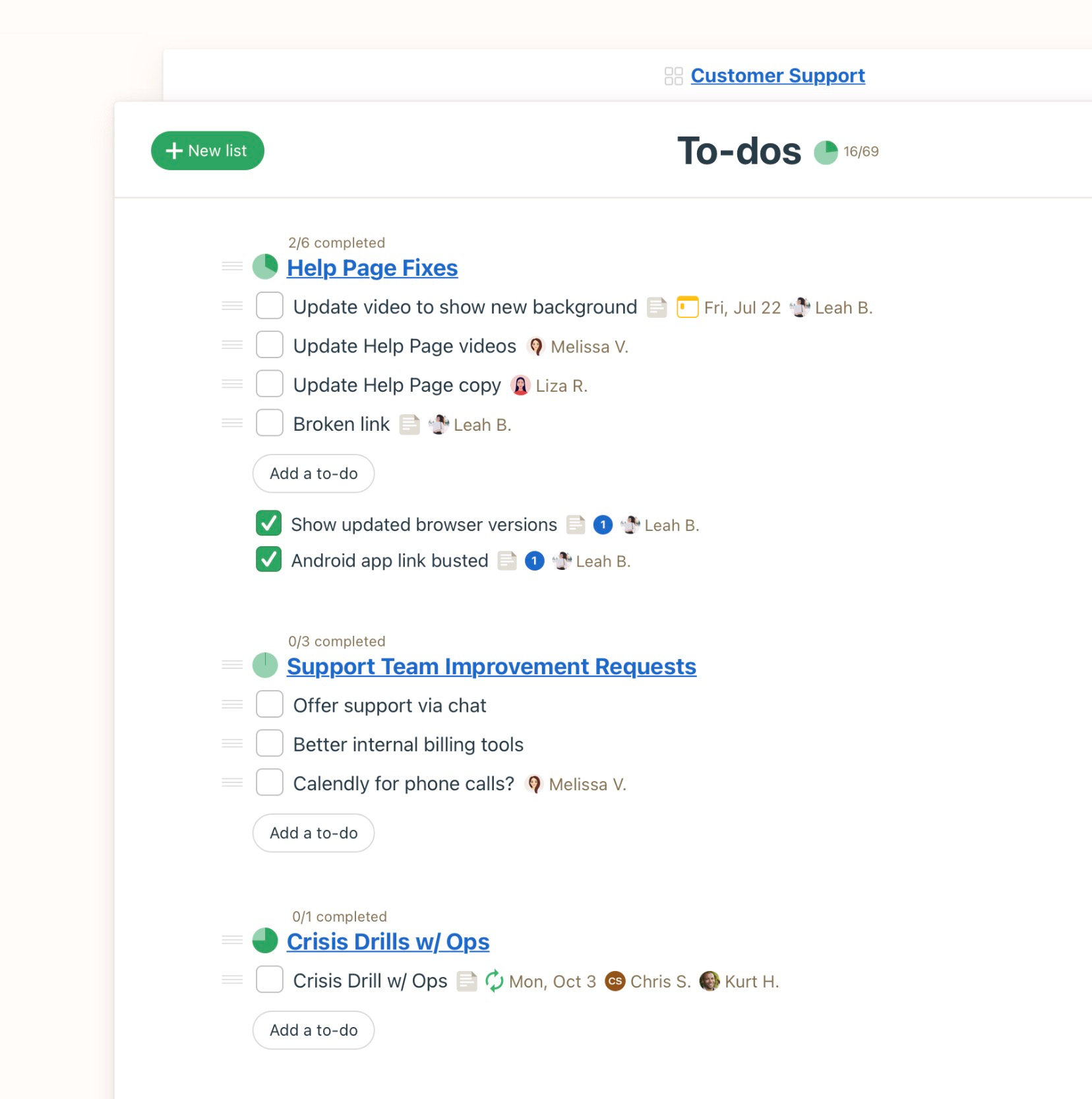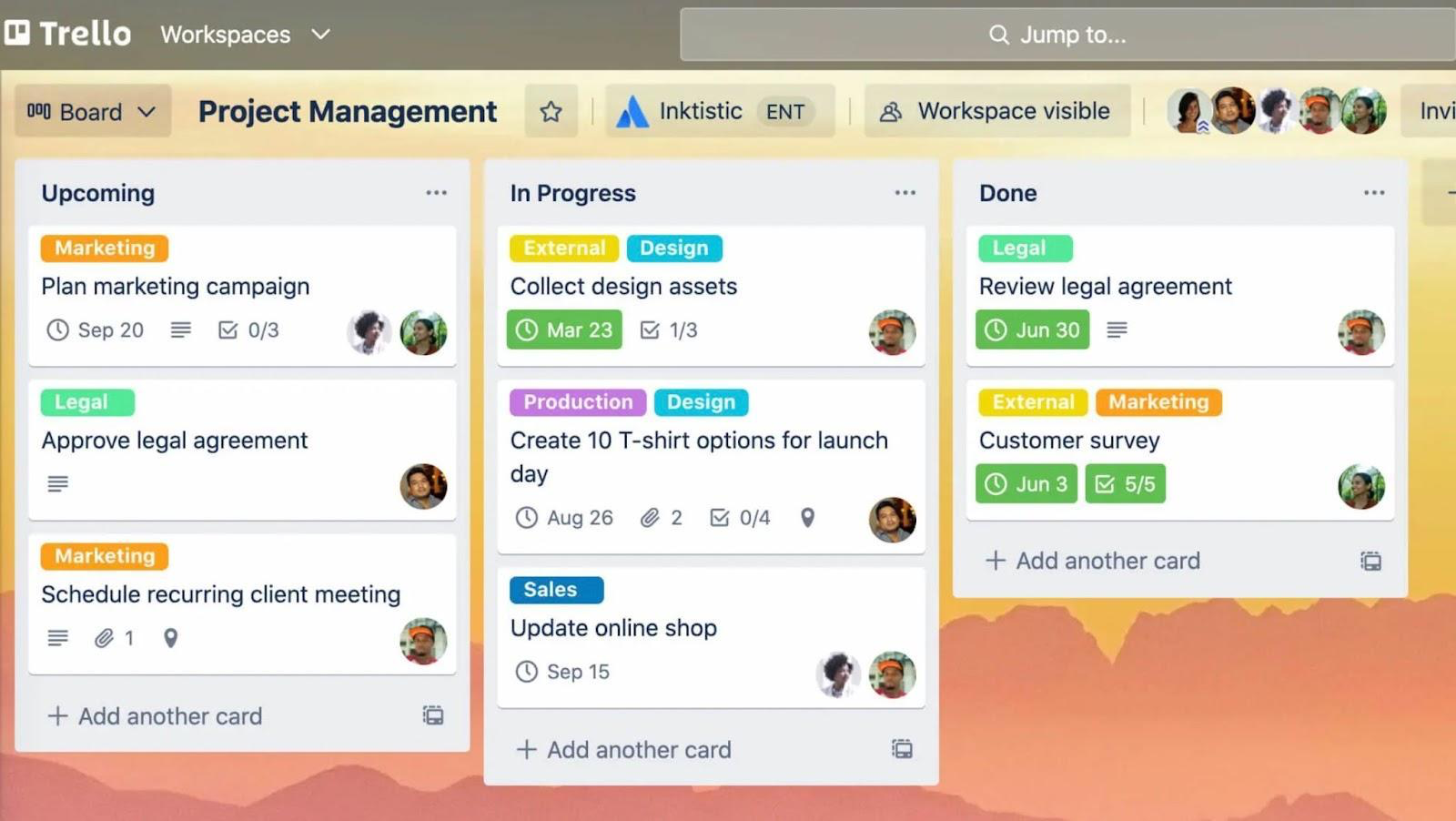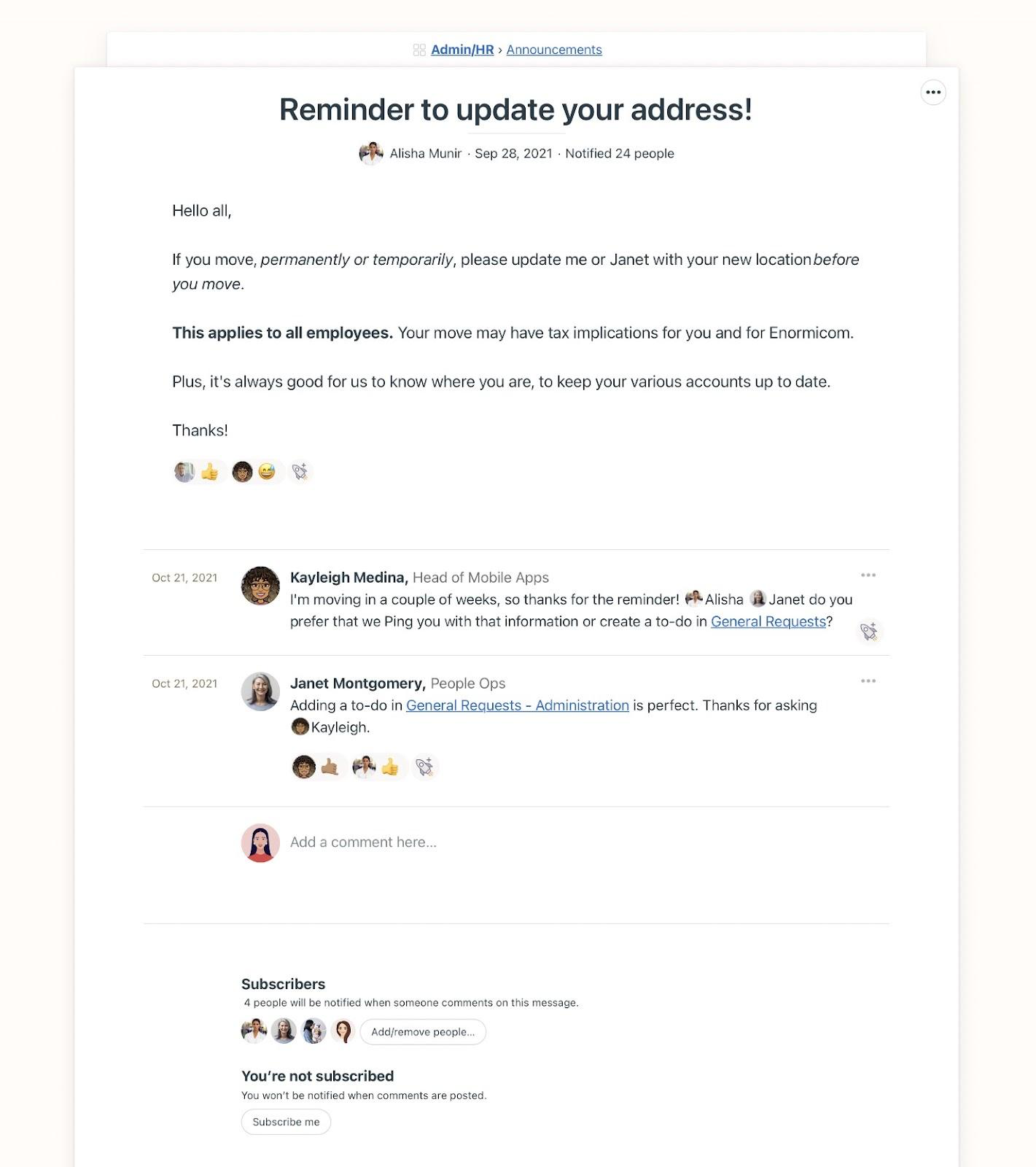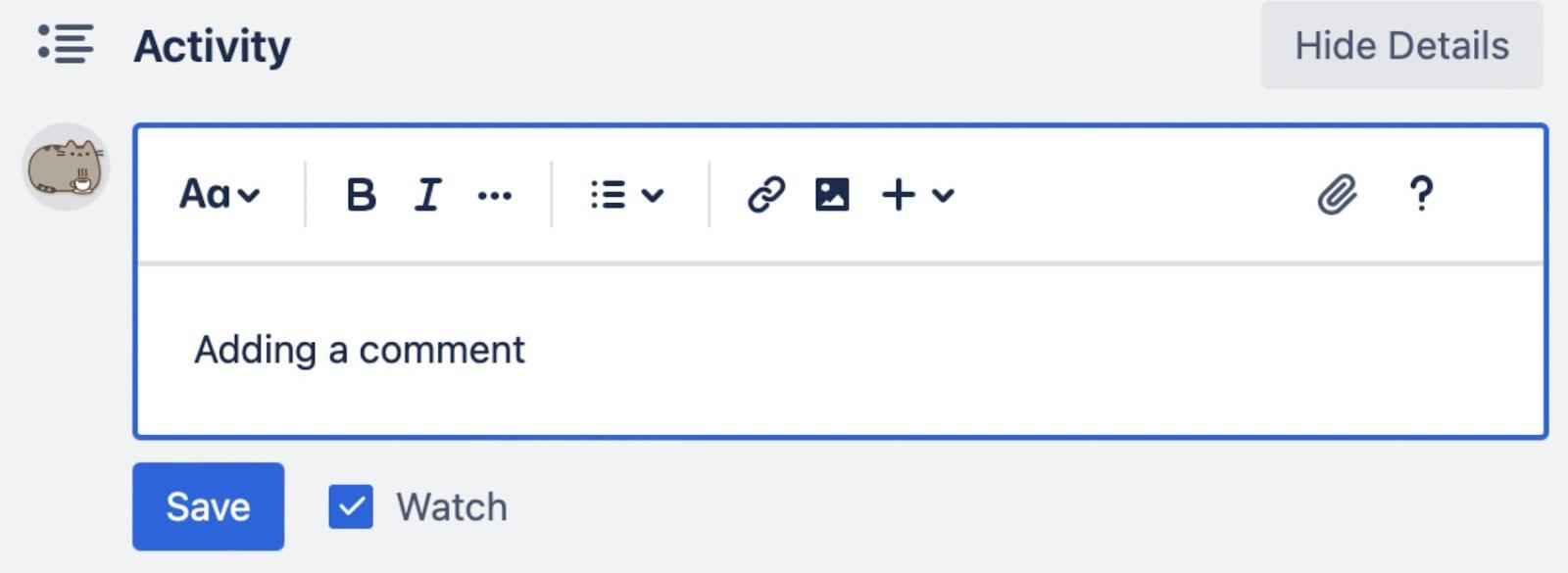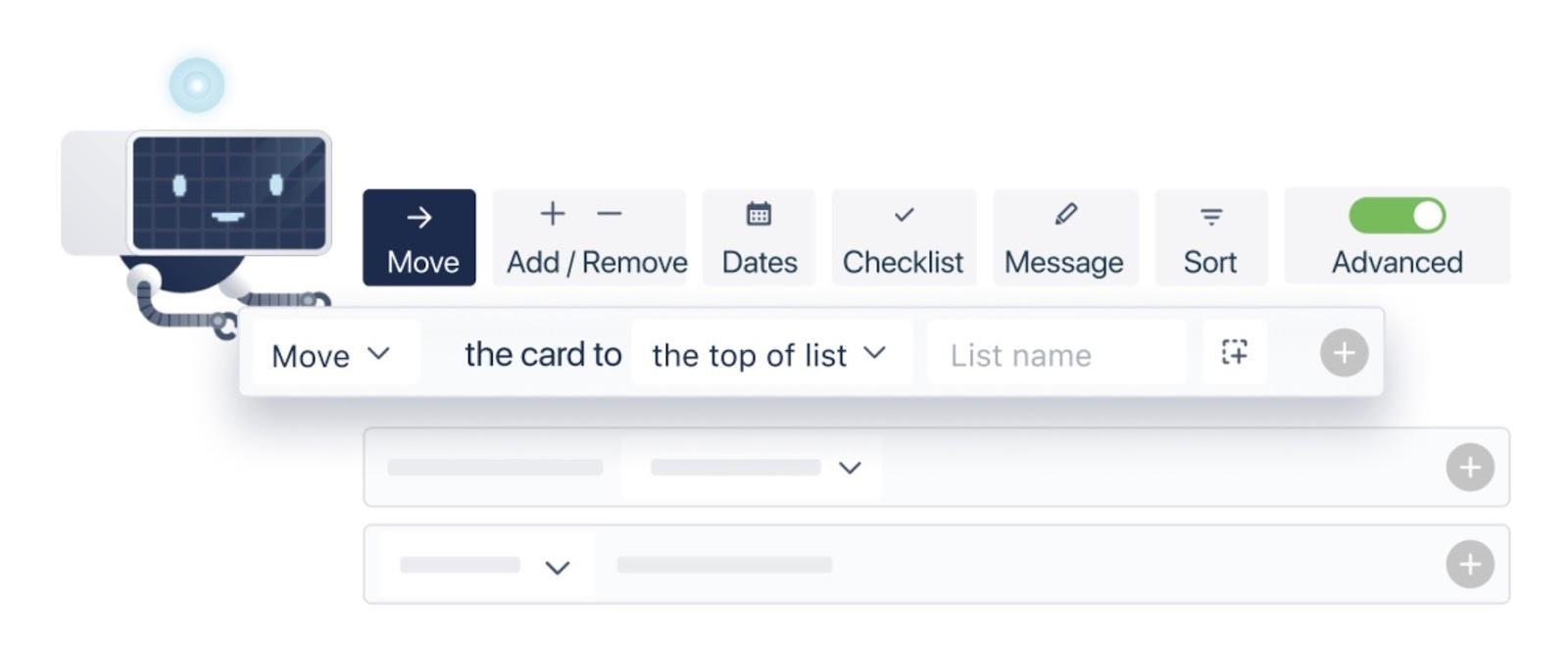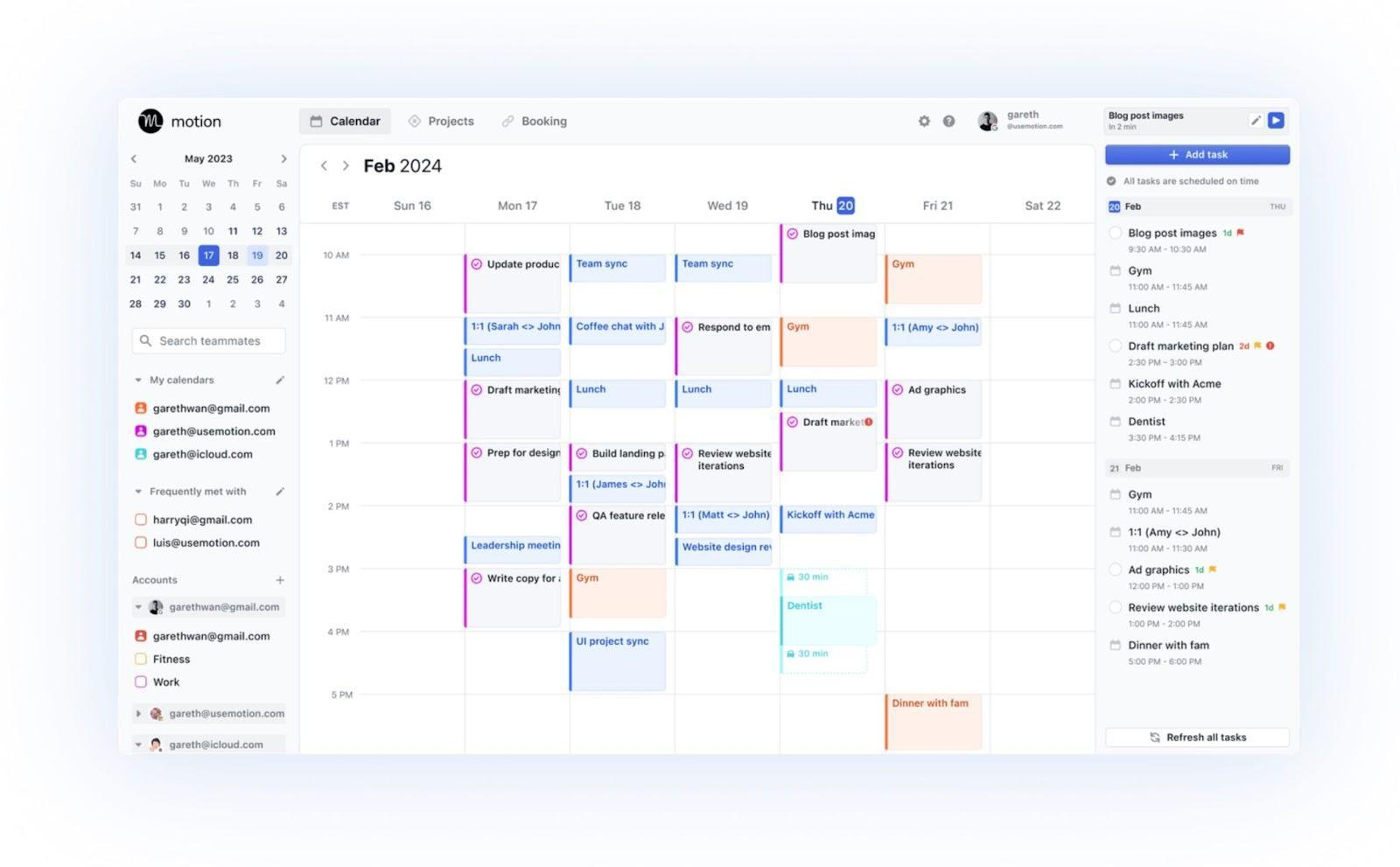Basecamp and Trello are most affordable project management tools for small teams. However, the two apps take completely different approaches to helping you manage projects, tasks, and workloads.
Which one of these approaches will fit your team much better than the other?
This article will help you answer this question and find the best project management tool for your needs. We compare Basecamp and Trello's features, pricing, and strengths and weaknesses so you can make the right choice for you and your team.
Basecamp vs. Trello: Key feature comparison
To help you choose between Basecamp and Trello, let’s take a look at their key features – and how they differ.
Project management: Basecamp’s flexibility vs Trello’s simplicity
Basecamp simplifies project management into team to-do lists, cards, and its own take on the Kanban system. You also get several other views for tracking the progress of tasks and projects.
This means you get more flexibility from Basecamp compared to Trello, which is pretty much limited to the Kanban system. In this sense, Basecamp is a few steps closer to a traditional management system than Trello.
That being said, Basecamp still isn’t a replacement for complete project management platforms. While you can manage projects, teams, and workloads, it lacks the more intricate control you expect from a true project management tool, such as task dependencies, Gantt charts, and drag-and-drop timelines.
Trello, on the other hand, takes the Kanban approach to project management. It creates a simple workspace for teams to manage and keep track of tasks that almost anyone can pick up and use right away.
Trello turns simplicity into its biggest asset with a platform that involves almost no learning curve. The consequence of this is that it lacks the flexibility feature depth of Basecamp.
Depending on the kind of projects you’re managing, Trello’s simplicity could be its biggest selling point. On the other hand, it could also be the dealbreaker.
Task management: To-do lists vs Kanban boards
Historically, Basecamp has always taken the to-do list approach to task management. Although the platform has implemented its own takes on the timeline views and Kanban system, to-do lists are still the heart of task management on Basecamp.
Obviously, the key difference with Trello is that everything centers around the Kanban system. This means you’re working in boards, lists and cards. So, instead of to-do lists, you can create lists to categorize cards (tasks) in almost any way you like – eg: “Upcoming,” “In progress,” and “Done”.
You can assign cards to team members and move them across lists as your project progresses. As a visual representation of projects and tasks, the Kanban system can be highly effective but it does struggle with larger or more complex projects.
Collaboration: Basecamp is in another league here
Collaboration is where Basecamp really shines and it can genuinely replace several tools for small-to-medium teams here.
Firstly, you’ve got two built-in communication systems: Chat, for real-time messaging, and a message board for more evergreen communications like announcements, progress updates, and guidance notes.
Basecamp also includes its own docs and files system for importing, sharing, and commenting on documents. It’s no replacement for tools like Google Docs, but the integration can save you swapping between multiple apps.
Crucially, you can also invite non-team members to collaborate, such as clients who need limited access to docs.
Given how collaborative Basecamp is, notification overload might be a genuine concern – if not for its notification management controls. You can choose to receive notifications for everything, only when you’re tagged, or set availability windows for notifications.
Trello takes a hands-off approach to collaboration. You don’t get in-app messaging or a message board, and you certainly don’t get a built-in docs management system. Instead, you get a simple commenting system with @mentions, document sharing via links and attachments, and notifications. That’s pretty much it.
Of course, this will suit some teams and projects more than others. Projects composed of more individual workloads may benefit from a less collaborative system. Likewise, some of the more process-driven teams may prefer a simple system of comments and feedback.
There’s no right or wrong answer here; you just have to figure which is better for your needs.
Workflow automation: Trello wins this round
Trello is a simple tool at heart, but its workflow automation features pack a real productivity punch. You can build code-free automation workflows for repetitive tasks like moving cards to other lists when assignees mark them as complete.
It takes a while to manually set up the workflows, but Trello’s assistant (called Butler) can recognize repetitive actions and recommend automations for you to enable with a single click.
Basecamp, on the other hand, doesn’t offer any notable automation features at all. You have to integrate with automation tools like Zapier before you can even try to replicate any of Trello’s built-in workflow automations.
Who should use Basecamp?
You should use Basecamp if you want a collaborative workspace for tackling team projects. Remember that it’s not a true project management app (and neither is Trello). Consider Basecamp as a list-based task management tool with built-in messaging, docs management, and other collaboration features.
If project management is more important than collaboration, you might want to explore other options.
Who should use Trello?
You should use Trello if you want an affordable alternative to complete project management tools, and the Kanban system will work for your project/team.
Trello’s simplicity is great for managing basic and small-scale projects, but it falls apart if you try to use it for large, complex, or multiple projects. Project managers quickly lose visibility over the whole project and keeping track of tasks becomes increasingly difficult.
If your next project is too complex for Trello, look for a tool that makes life easier for project managers and team members.
Basecamp vs. Trello: How does the pricing compare?
Basecamp and Trello take completely different approaches to work management, and their pricing models are similar. Here’s a quick review of the plans and pricing available with each tool.
Plans and pricing
Basecamp:
- Free trial
- Basecamp: From $15 per month per user
- Pro Unlimited: $299 per month
Trello:
- Free plan
- Standard: From $5 per month
- Premium: From $10 per month
- Enterprise: From $17.50 per month
Basecamp vs. Trello: Which is better value for money?
For most use cases, Trello is the cheaper tool, but you’ll also get fewer features for your money. Meanwhile, Basecamp’s starting price is significantly more expensive, but its Pro Unlimited pricing (unlimited users) is cheaper for larger teams of 18 or more.
It is difficult to say whether one is better value for money than the other because they’re completely different tools. Trello is the cheaper tool for most use cases, but the bigger question is: which tool will help you complete the project most effectively?
Basecamp vs. Trello: What do actual users say about these apps?
Feedback from Basecamp users
Basecamp users typically praise the platform’s usability and unique collaboration tools. Here’s a quick sample of what some Basecamp customers have to say about the app:
“Basecamp is very user-friendly and offers many features for our team. It allows us to collaborate on projects/events and everyday communication. The people on our team who have been most successful with Basecamp use it throughout the day, every day.” – Deborah B.
“What our team likes about Basecamp is the ability to store assets such as images, videos, PDFs, documents, alongside with projects and Basecamp documents.” – Seamus P.
As expected, most complaints from Basecamp customers wish the platform delivered more regarding project management features.
“While Basecamp offers excellent project management capabilities, having more detailed metrics and insights into the timeline of events would greatly enhance the ability to track progress and identify potential bottlenecks. By incorporating more granular metrics, such as task duration, milestone completion rates, or individual team member contributions, Basecamp could provide users with a more comprehensive understanding of project timelines and enable more effective project planning and management” – Lucas P.
If Basecamp didn’t specifically market itself as a project management platform, it probably wouldn’t receive as many reviews along this line.
Feedback from Trello users
Trello customers generally love the platform’s simplicity, and users with modest project management news are usually the happiest. Here are a few snippets from Trello customer reviews:
“Came from Asana, needed something simpler for small projects that mainly just involve moving tasks from one swim lane to another as they're in progress/complete. The power of Trello is the simplicity.” – Ben H.
“Its drag-n-drop based feature makes it a very easy tool for all types of users regardless of their previous experience,” but “as the number of project board increases, it can look clustered and be confusing to properly navigate and prioritize the tasks, which can directly impact the work productivity.” – Bikash P.
Again, most complaints come from customers who reach the limits of Trello’s capabilities or find it lacks advanced features.
“I wish Trello had more features, similar to its competitors such as a dashboard. Currently, it seems like Trello won’t work if you are in a scaling up phase for your business and hiring multiple people.” – Ashley L.
Quite simply, Trello is a very basic project management tool. This is arguably its biggest selling point, but it does not meet the needs of even moderately complex projects.
Basecamp vs. Trello: The pros and cons
Basecamp pros and cons
Pros
- A flexible workspace tool that can help teams manage basic projects
- Easy to collaborate with clients and external team members
- Automatic check-ins with team members are a non-intrusive way of keeping track
- Notification management reduces distractions
- Good value for larger teams, although a cheaper mid-tier plan would be nice
Cons
- Chats and messages are siloed to specific projects and teams, making it harder to access conversations/information
- Almost no automation features of any kind, which is becoming standard stuff for productivity tools
- Basecamp is more flexible than Trello but requires quite a lot of user input
- Basecamp takes a lot longer to learn than Trello
Trello pros and cons
Pros
- Great for managing simple projects — if the Kanban system works for you
- With impressive workflow automation, Trello punches above its weight as a productivity tool
- If the free or entry plans provide what you need, Trello is as affordable as it gets
- Minimal collaboration features mean you spend less time sending and answering messages
Cons
- It’s either Kanban or nothing
- Basecamp’s list-based system is better for task management
- Trello’s architecture struggles with complex projects
Basecamp vs. Trello: Verdict
Basecamp and Trello are so different this choice should be relatively easy. Trello is the best place to start if you want the simplest, cheapest project management tool. On the other hand, if collaboration is more important, Basecamp might be the better option for your team.
The problem is that both tools start to struggle with large or complex projects. Admittedly, Trello runs into problems much sooner but Basecamp’s lack of automation and advanced task management features will slow your team down, sooner or later.
Motion: The AI-powered alternative to Basecamp and Trello
Motion’s intelligent algorithm analyzes your tasks and creates the ideal schedule for you and your team. It finds the most effective schedule to ensure everyone meets their deadlines and automatically reschedules tasks if anything changes. This means your team can concentrate on getting things done, instead of constantly moving things around in a tool like Basecamp.
If you want a true project management platform for managing team workloads, try Motion for free today.
Is Motion the Basecamp and Trello alternative you’re looking for?
Motion is the AI project management system that uses intelligent scheduling to plan the perfect project roadmap for your team. Simply add your tasks, and Motion creates the most productive schedule for you, automatically prioritizing tasks with realistic deadlines.
Motion’s AI reduces the time you spend on repetitive project management tasks by 30%. Forget about updating task statuses or constantly chasing up team members.
If you need an all-in-one project management system that helps your team achieve more, Motion is the perfect alternative to Basecamp and Trello.
Start your Motion free trial and forget about the stress of project management.

Benita is a wizard at breathing life into the dry and dense world of B2B SaaS. Bringing a fresh perspective to every piece, Benita turns exhaustive research into a delightful read, making even the most well-covered topics feel fresh and exciting. When she's not writing, you can find her collecting recipes and crocheting her own clothes.

